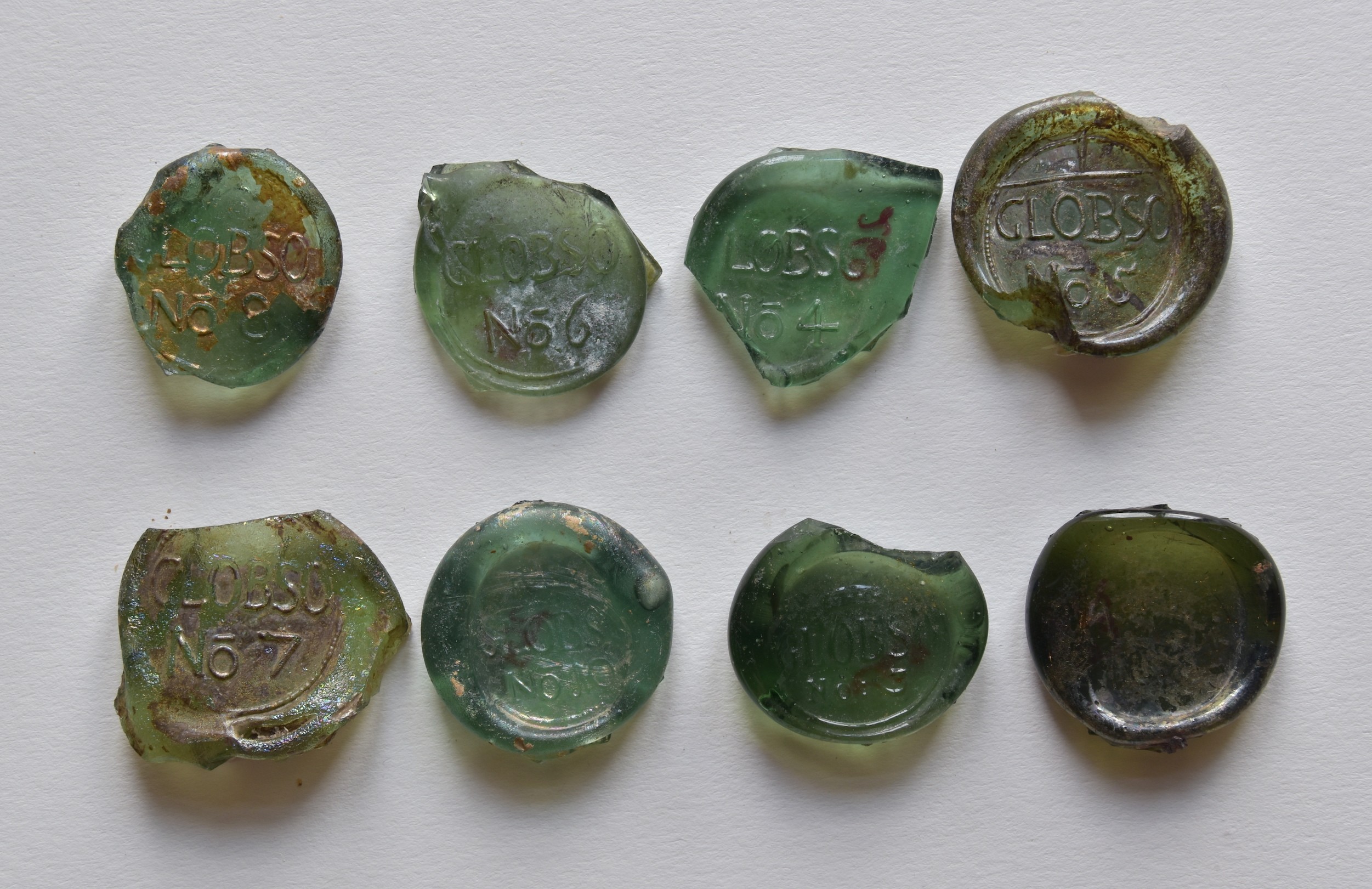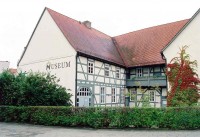Acht Marken aus grünem Glas, gestempelt mit: (1) GLOBSO / No 8; (2) GLOBSO / No 6; (3) GLOBSO / No 4; (4) I / GLOBSO / No 5; (5) GLOBSO / No 7; (6) Krone / GLOBSO / No 10; (7) Krone / GLOBSO / No:3; (8) Krone / GLOBSO / No 8?", teils mit einer aus kleinen Punkten zusammengesetzen Innenlinie, alle korrodiert.
Entsprechend dokumentierter Marken dürfte es sich bei diesen Bodenfunden formal um Produkte der Globsower Glashütte aus der Zeit vor 1780 handeln (Friese, Glashütten in Brandenburg, 1992, S. 47f.). Die Variante (4) ist sehr selten. Die Fragmente kamen aus der Sammlung Prof. Dr. Albert Richter aus Eberswalde in den Museumsbestand. [Verena Wasmuth]
hu

